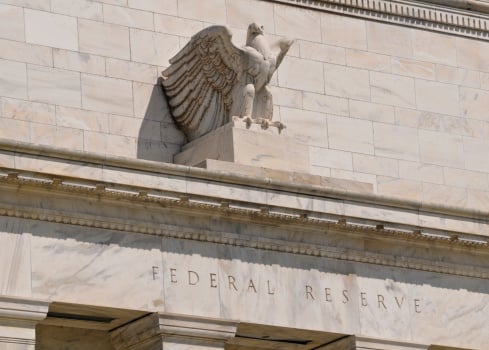Economy
FOMC Twist: Potential Changes to How Fed Funds Rate Gets Calculated
Published:
Last Updated:
While the FOMC Minutes from the Federal Reserve are highly watched, the reality is that the broad commentary often gives much ammunition to both sides, the bulls and bears as well as the hawks and doves. The June FOMC meeting’s minutes did contain something unique: a potential change to how the fed funds rate is calculated. Source: Thinkstock
Source: Thinkstock
While this is not exactly breaking news, and while some mention may have been noted previously, it does not seem a stretch at all to wonder if investors will scratch their heads here. Should investors worry about this meaning a new way to effectively change rates without changing rates?
The New York Federal Reserve publishes the fed funds rate based on a volume-weighted mean of rates based on Fed transactions. This is a bit complicated of course, and is too technical for most of us, but think about what this could mean going into a fed funds interest rate hike cycle in 2015 or 2016.
It is also very important to keep in mind that the fed funds rate has effectively been at 0.0% (range of 0.00% to 0.25%) since the end of 2008. That means that a large portion of the newly investing public has never gone through an interest rate cycle that has involved a series of interest rate hikes where the public feels like the Federal Reserve is trying to put a governor on the economy.
ALSO READ: Bond Liquidity Crisis Update: An Unexpected Regulatory Outcome
The FOMC Minutes said:
The manager updated the Committee on tentative plans to improve the calculation of the effective federal funds rate published by the Federal Reserve Bank of New York. The effective federal funds rate, currently defined as the volume-weighted mean of interest rates on federal funds transactions, would be redefined as the volume-weighted median. Staff analysis suggested that the volume-weighted median would usually differ little from the volume-weighted mean, but that the median would be a more robust statistic when some trades occur at interest rates that are unrepresentative of general market conditions or when there are data problems such as reporting errors. The change in approach would be implemented next year in conjunction with the transition to the Report of Selected Money Market Rates (FR 2420) as the data source for the calculation of the effective federal funds rate. A volume-weighted median would also be used to construct a representative measure of conditions in the broader set of markets covered by the new overnight bank funding rate.4 The manager noted that additional background information on these changes would be published by the Desk shortly following the release of the minutes from this meeting. Participants expressed no objections to the proposal.
That footnote 4 was shown as follows:
On February 2, 2015, in addition to announcing preliminary plans to improve the calculation of the effective federal funds rate, the Federal Reserve Bank of New York indicated that it planned to begin to publish an additional interest rate, the overnight bank funding rate, which will be based on both federal funds transactions and the Eurodollar transactions of U.S.-managed banking offices.
This is one of those situations in which it may take an economic mathematician to determine what the end game is. For the rest of us, maybe it is a bit puzzling to see this ahead of the expected interest rate hike cycle.
ALSO READ: 4 Retail Stocks to Buy That Should Shrug Off Higher Interest Rates
Take the quiz below to get matched with a financial advisor today.
Each advisor has been vetted by SmartAsset and is held to a fiduciary standard to act in your best interests.
Here’s how it works:
1. Answer SmartAsset advisor match quiz
2. Review your pre-screened matches at your leisure. Check out the advisors’ profiles.
3. Speak with advisors at no cost to you. Have an introductory call on the phone or introduction in person and choose whom to work with in the future
Take the retirement quiz right here.
Thank you for reading! Have some feedback for us?
Contact the 24/7 Wall St. editorial team.